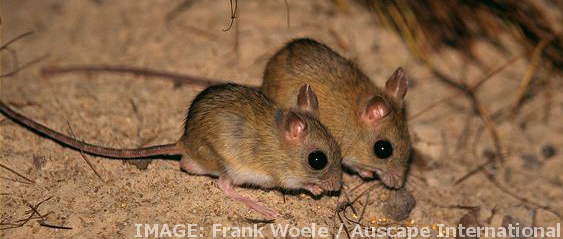Tiny debut could be sole role for rodent
A beautiful, ingenious and miniscule Australian native has been caught on camera, but researchers believe it may be the first and last time.
The University of Queensland researcher who caught the endangered northern hopping mouse on camera for the first time believes the tiny mammal could be closer to the brink of extinction than previously thought.
UQ School of Agriculture and Food Sciences Ecology Lecturer and PhD candidate Rebecca Diete spent 12 months searching for the mouse on Groote Eylandt, 50 kilometres off the Northern Territory coast, before catching her first glimpse.
 Her footage can be seen below.
Her footage can be seen below.
Measuring just 10 centimetres long from the tip of the nose to the base of the tail, the northern hoping mouse stands and hops along on its two hind legs like a tiny kangaroo, though as a rodent it is closer related to rats and mice
The northern hopping mouse (Notomys aquilo) has some impressive engineering skills, too.
Females of the species build extensive concealed burrows to hide from predators such as quolls, snakes and owls – and from curious scientists.
Ms Diete said her study revealed that population estimates of some of Australia’s most elusive native animals often relied on indirect and potentially inaccurate measures.
“The northern hopping mouse is very shy and hard to track down, so population estimates have relied on counting spoil heaps – the piles of sand left behind when the mouse digs burrows,” Ms Diete said.
“I found that some spoil heaps believed to belong to the northern hopping mouse were made by a different animal – the delicate mouse (Pseudomys delicatulus).
“The northern hopping mouse is listed as endangered on the International Union for Conservation of Nature red list, so better survey methods and correct estimations of populations are vital.
“We shouldn’t rely on signs of endangered animals if we’re not absolutely certain that it was that animal making them.
“Estimates of hopping mouse numbers made only from spoil heap assessments could be much higher than the reality.
“There were 10 species of hopping mouse in Australia and in the past 200 years we’ve lost five of them. We need to understand and protect those that are left,” she said.








 Print
Print